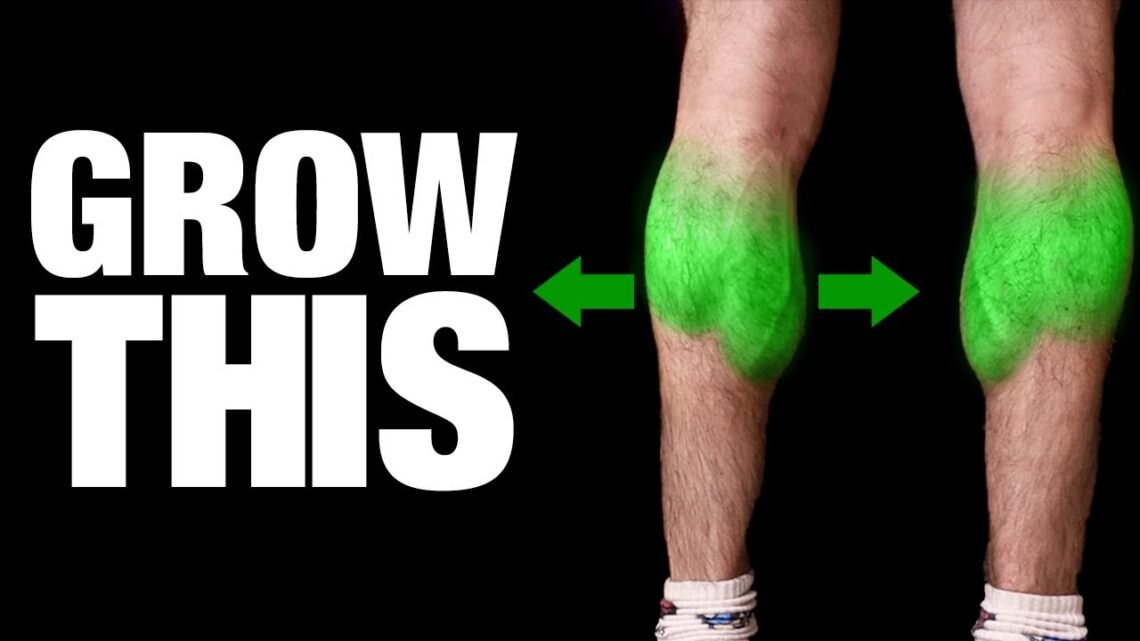
Do This EVERY Day for Bigger Calves! (ONE MOVE)
July 27, 2021If you want to build bigger calves and feel like you have tried everything without success, you are going to want to watch this video before you avoid training your calf muscles for good. I’m going to show you in one move how to perform a common calf exercise a different way that could unlock all new results for you in just a matter of weeks.
The first thing that is always helpful however is to explain the science of calf training so you can understand why you’re doing what you are going to do. The calf muscle attaches to the heel via the largest tendon in the body, the achilles tendon. This happens to be one of the strongest tendons in the body but yet, still the most frequently torn.
The reason for this is simply due to the extreme forces that this tendon modulates every single time we take a step. Of course, these forces are magnified in running vs. walking.
The properties of the achilles tendon are that they are resilient to the highly ballistic nature of the forces that it is subjected to in function. It quickly transfers force from dorsiflexion to plantar flexion to keep the force both a mobile adapter to the ground and a rigid lever capable propelling your entire bodyweight off of the ground.
It has been documented that the achilles tendon can handle up to 1,000 pounds of force through it, making it capable of carrying much more than your own bodyweight and able to perform many dynamic functions.
The main issue however is when it comes to calf muscle development and growth. Here it becomes obvious that the main advantage of the tendon becomes it’s own curse. Because the tendon is so good at handling the ground reaction forces that start below it through the feet, it doesn’t necessarily transmit those forces up to the muscle that it is attached to so well.
This means that the calf muscles (both the gastrocnemius and the soleus) do not experience the peak tension that they should from the forces generated below. Less force directed into the calf muscle itself means less contractile stimulus for growth. So this is an instance where the achilles is being functionally efficient making running easier, but preventing the muscular inefficiency that we need to seek when we’re trying to force a stubborn muscle to grow.
How do we fix this?
We need to find a way to make the standing dumbbell calf raise more inefficient. That’s right, we have to make it harder. The way to do this at the ankle is to nullify the ballistic component of the moves that the calves favor. This means, no more bouncing your way through each rep of a barbell or dumbbell standing calf raise. In fact, the elimination of all momentum is going to be the key to unlocking bigger calves that is going to be a pleasant surprise for many that have chalked up their bad genetics to why they can’t grow big calf muscles.
By the way, regarding genetics, it is true that your DNA may be responsible for a good portion of how your calves may look. This is due to the fact that this muscle group can be comprised in many more slow twitch fibers in some smaller calved individuals and fast twitch in some large calved individuals. The other thing is that the insertion point of the muscle matters, which again is something genetically determined. The lower your insertions are the more full the muscle belly of the gastroc and soleus are going to look while the higher the insertion the more thin.
Regardless however, changing the tempo of your calf raises can make a big difference.
Next time you do dumbbell calf raises, try this. First, lower down and hold the bottom position for 4 seconds in order to take all elastic rebound out of the exercise. From here, lift up high onto your toe and hold the top position for 4 seconds again. Keep performing these slow controlled reps until you can’t do anymore. Don’t worry about what the number is but rather make sure to make these reps count.
Perform 3 sets on each leg every day.
That’s right. Every single day.
The calves are a resilient muscle group, well accustomed to the ground reaction forces applied to them through standing, walking and running that we do every day and therefore can handle higher volumes. With the weights lowered a bit to account for the slower reps, you want to make sure you keep the frequency high to get the volume to the place that it is capable of producing gains in this stubborn muscles.
If you find this to be the game changer that I believe it is and are looking for more workouts that put the science back in strength, remember to head to athleanx.com via the link below and get the program that is best suited to your goals.
For more calf workouts and calf exercise videos for bigger calves, be sure to subscribe to our channel here on youtube via the link below. Remember to turn on your notifications to never miss a video when it’s published.
Build ripped athletic muscle here – http://athleanx.com/x/my-workouts
Subscribe to this channel here – http://bit.ly/2b0coMW



